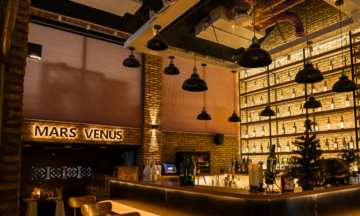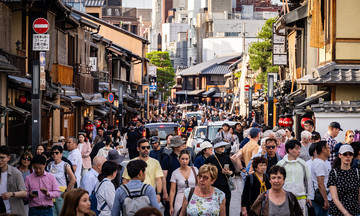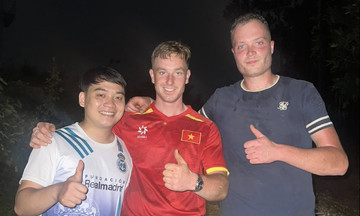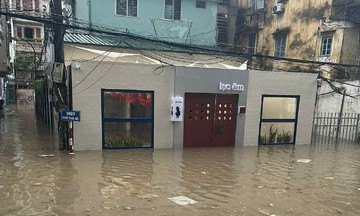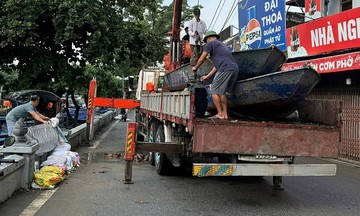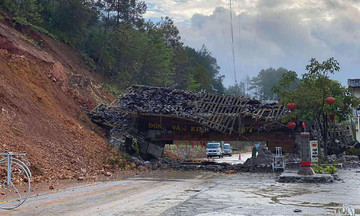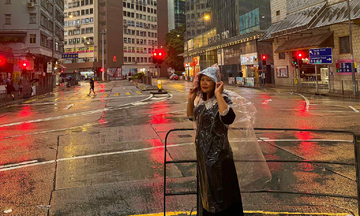In her South London home, 68-year-old Linda Tobey revisits memories of her 1997 Vietnam trip. "Memories came flooding back" as she looked at an old black-and-white travel brochure, its paper yellowed with age, detailing a journey through the three regions of Vietnam. At the time, Vietnam was a new name to her and her husband, known through television news "as a country that had experienced war."
In 1997, having traveled extensively through Europe, Central America, Egypt, China, and Indonesia, the Tobeys sought a less-touristy destination where they could experience local life and immerse themselves in the local culture.
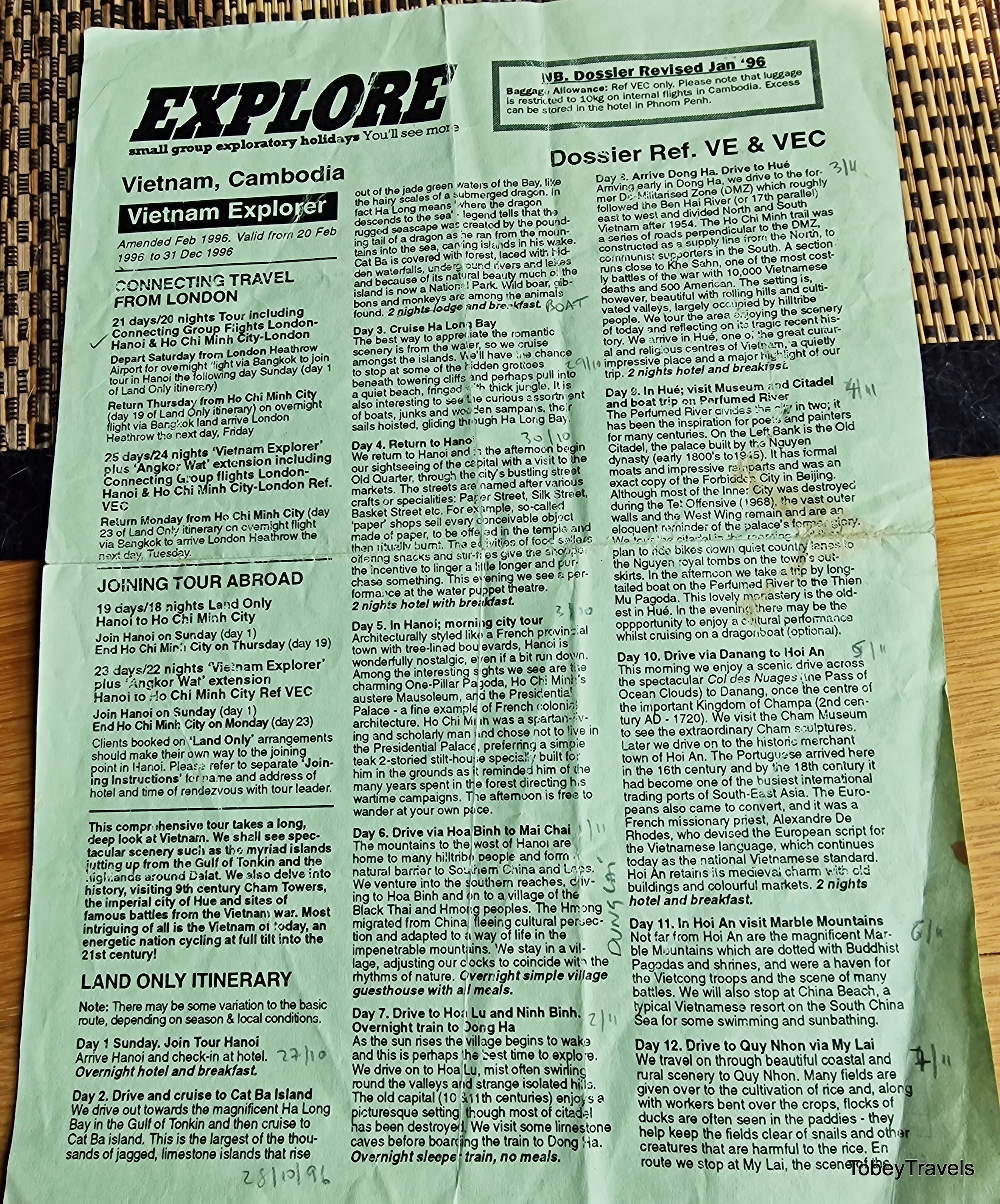 |
A Vietnamese tour advertisement from a UK travel agency.
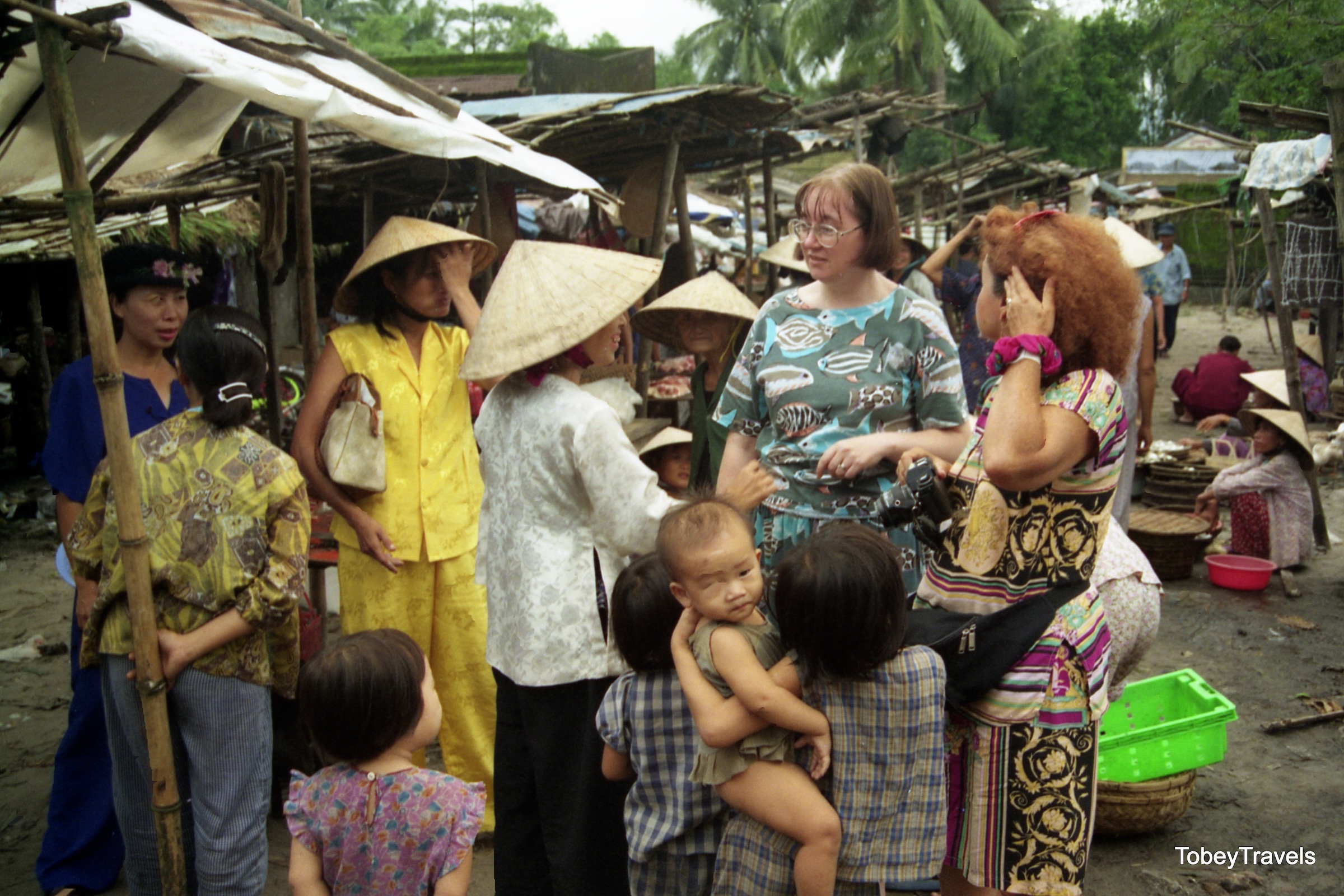 |
Linda Tobey interacts with locals at a market in Quy Nhon.
"We didn't want a resort vacation; we wanted an adventure and cultural exploration," she said. Upon seeing the advertisement, they booked the tour without hesitation. The 21-day trip, organized by Explore Travel (UK) as a small group tour, started in Hanoi and ended in Ho Chi Minh City. Their guide, an Australian, was fluent in both English and Vietnamese. The group of 12 included travelers from the UK, US, Belgium, and France, ranging from a young man in his early twenties on his first trip abroad to a couple in their fifties.
In 1997, there were no direct flights from London to Vietnam. Passengers flying from Heathrow had to transit in Bangkok. Their journey was an overland tour, combining travel by car and train, with stays in small hotels.
The 21-day tour took them through many notable destinations across Vietnam: from Hanoi, Ha Long Bay, Cat Ba Island, Mai Chau, and Ninh Binh, they then took a train from Hoa Lu station to Dong Ha station in central Vietnam. Afterward, the group continued to Hue, Da Nang, Hoi An, Quang Ngai, Quy Nhon, Nha Trang, Da Lat, and finally, Ho Chi Minh City.
 |
The train stopped at Hoa Lu station.
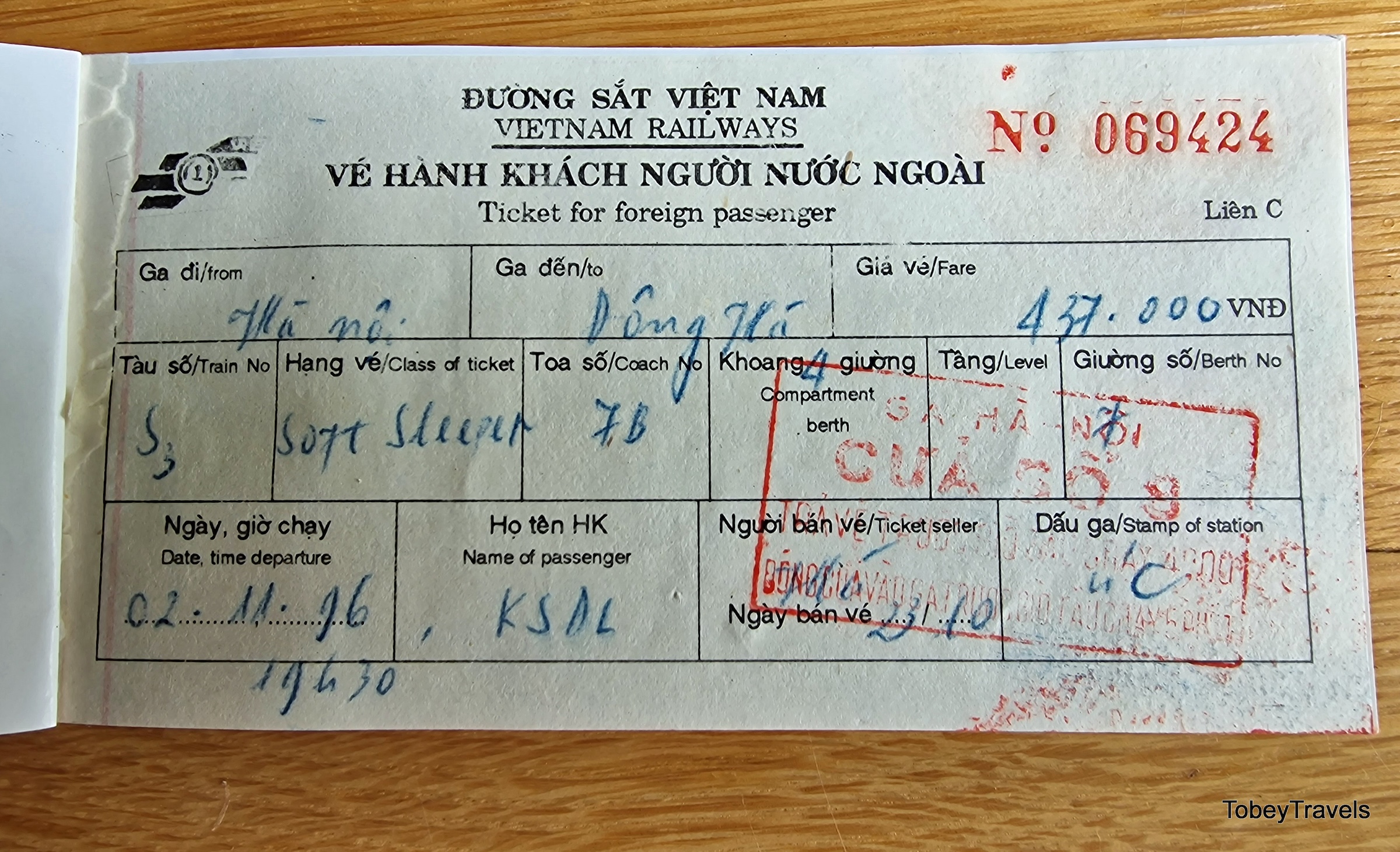 |
Train ticket for foreign visitors.
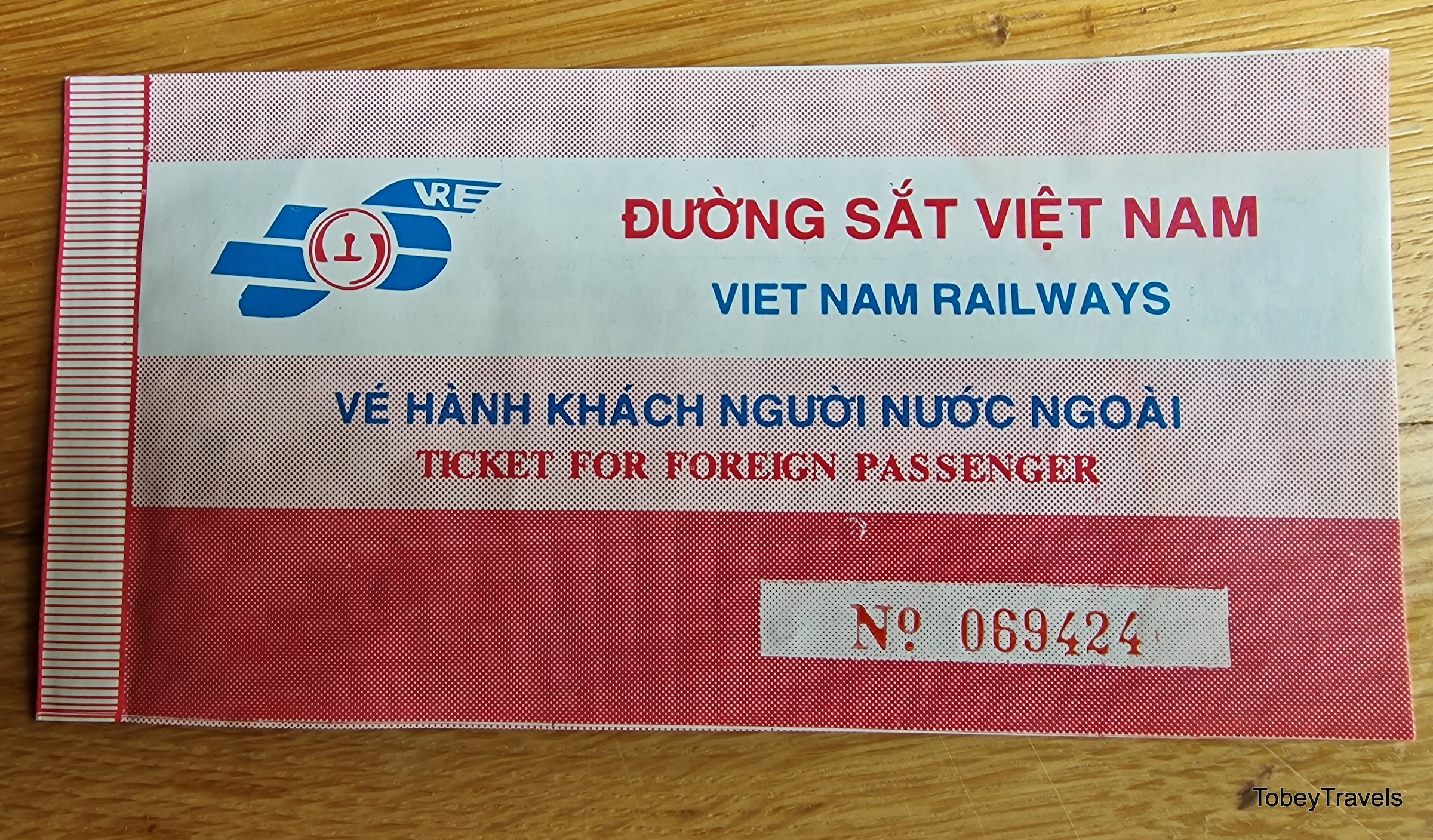 |
Train ticket for foreign visitors.
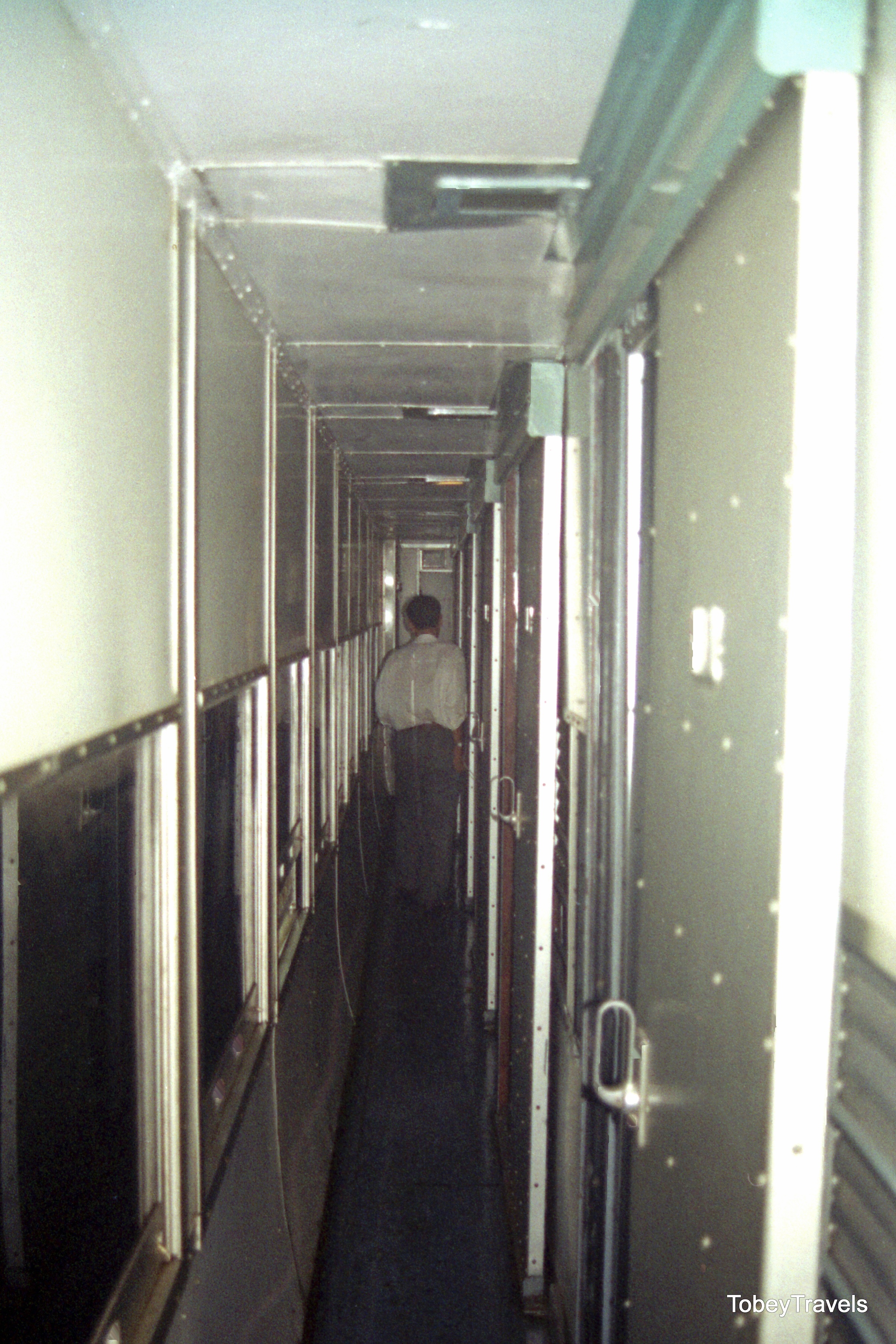 |
Inside the train carriage from Hoa Lu to Dong Ha.
The only train journey during the trip, lasting nearly 20 hours, was from Hoa Lu station to Dong Ha station. The soft sleeper ticket price was 437,000 VND, included in the tour cost.
"We were the only foreigners on the train. Unfortunately, we couldn't visit the carriages with locals because the staff had locked the connecting doors," Tobey recounted. The train was clean, and the beds could be folded away neatly. While there was no food service on board, the staff brought tea to their cabin in the morning.
The British traveler vividly remembers the terrible weather that day, coinciding with the historic Typhoon Linda making landfall in Vietnam. The train traveled through the stormy night, with strong winds and constant rain. The group slept through the journey and had no opportunity to get off at stations or interact with anyone.
"The overland journey was the real adventure," Tobey said. Four members of the group abandoned the trip midway, opting to fly directly to Ho Chi Minh City, unable to endure the arduous travel conditions. Due to the typhoon, many sections of the road in Quy Nhon and along the Ho Chi Minh Trail were washed away by floods, making travel incredibly difficult.
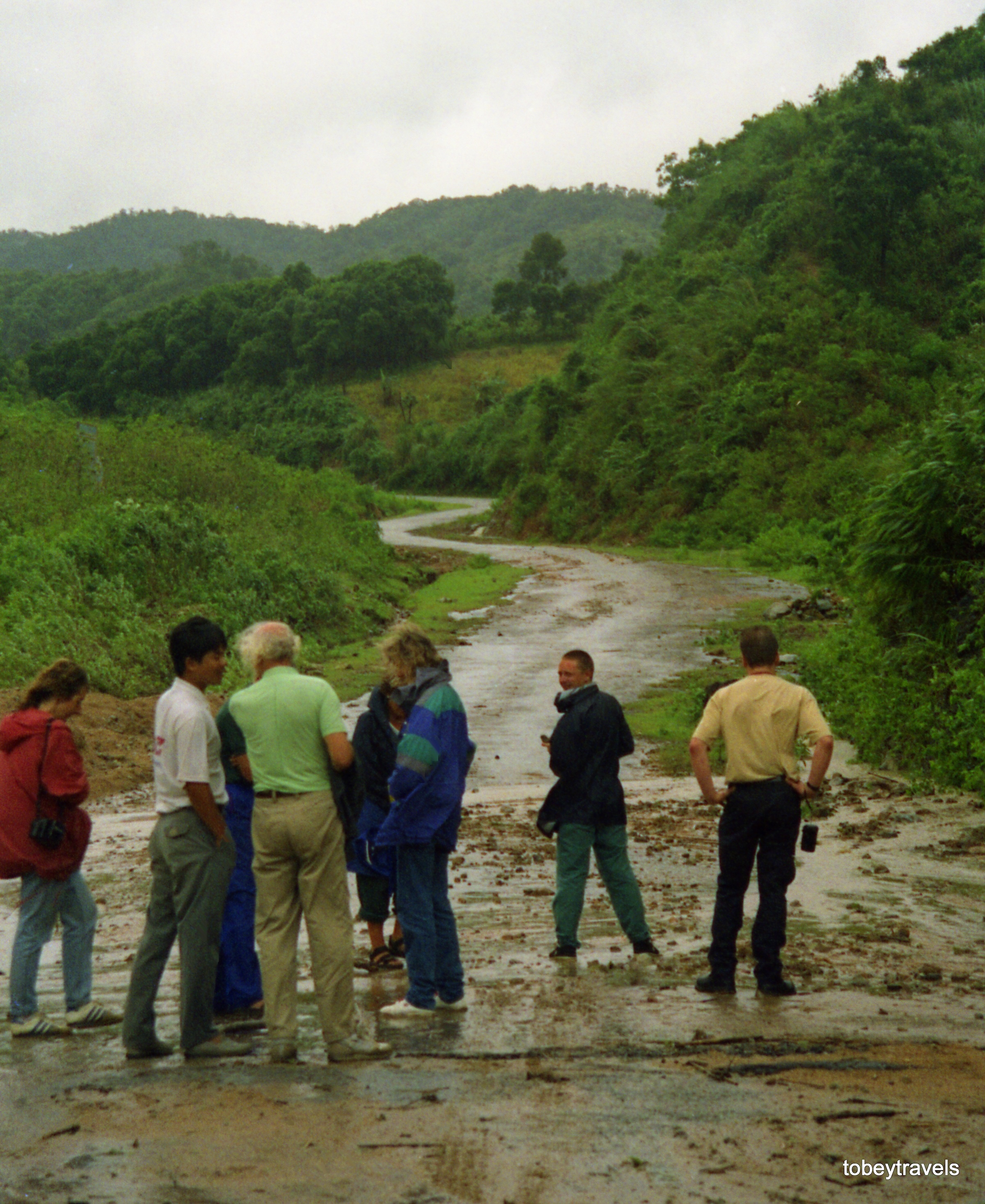 |
The group of Western tourists on the Ho Chi Minh Trail after the 1997 typhoon.
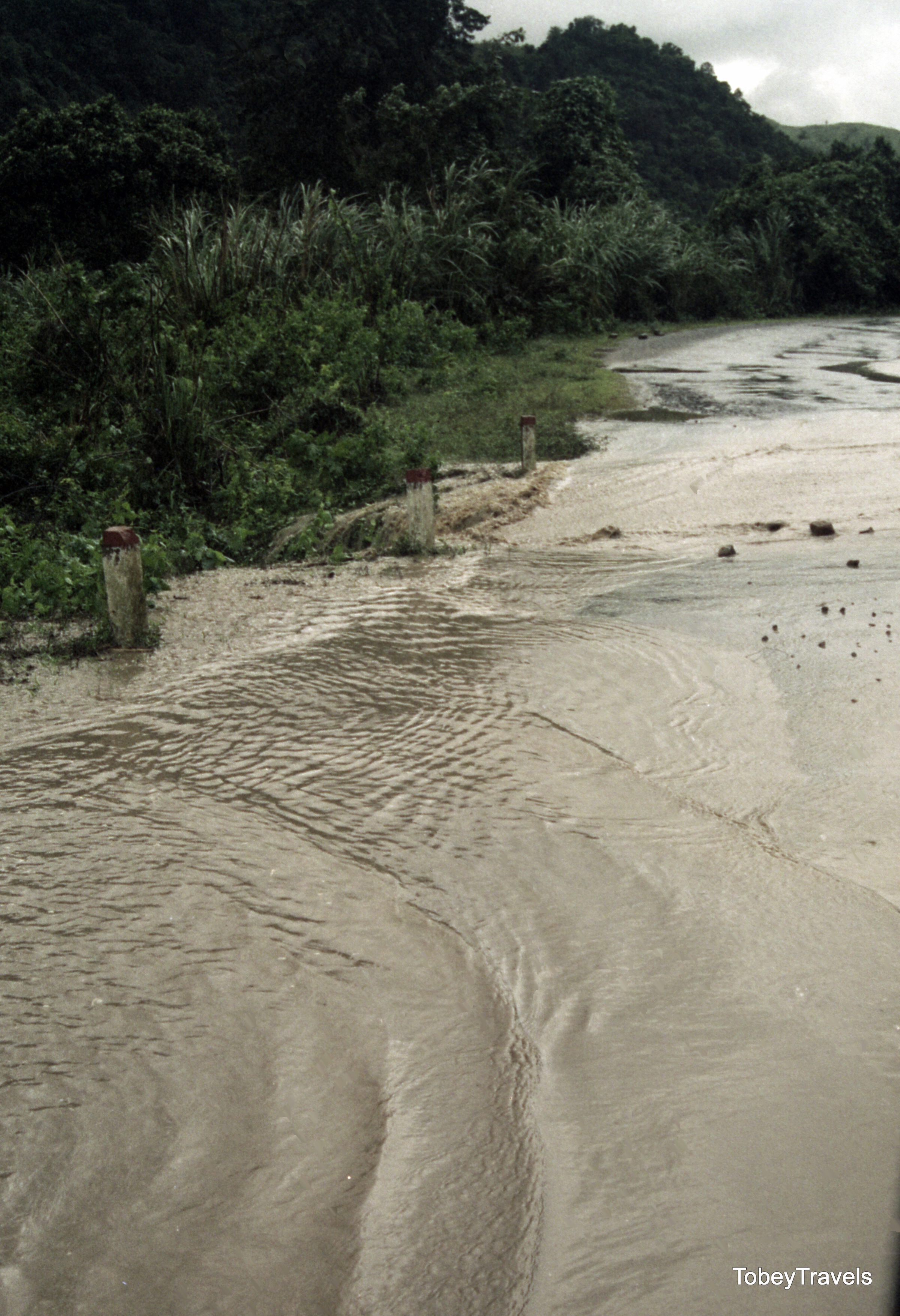 |
A section of the trail deeply flooded.
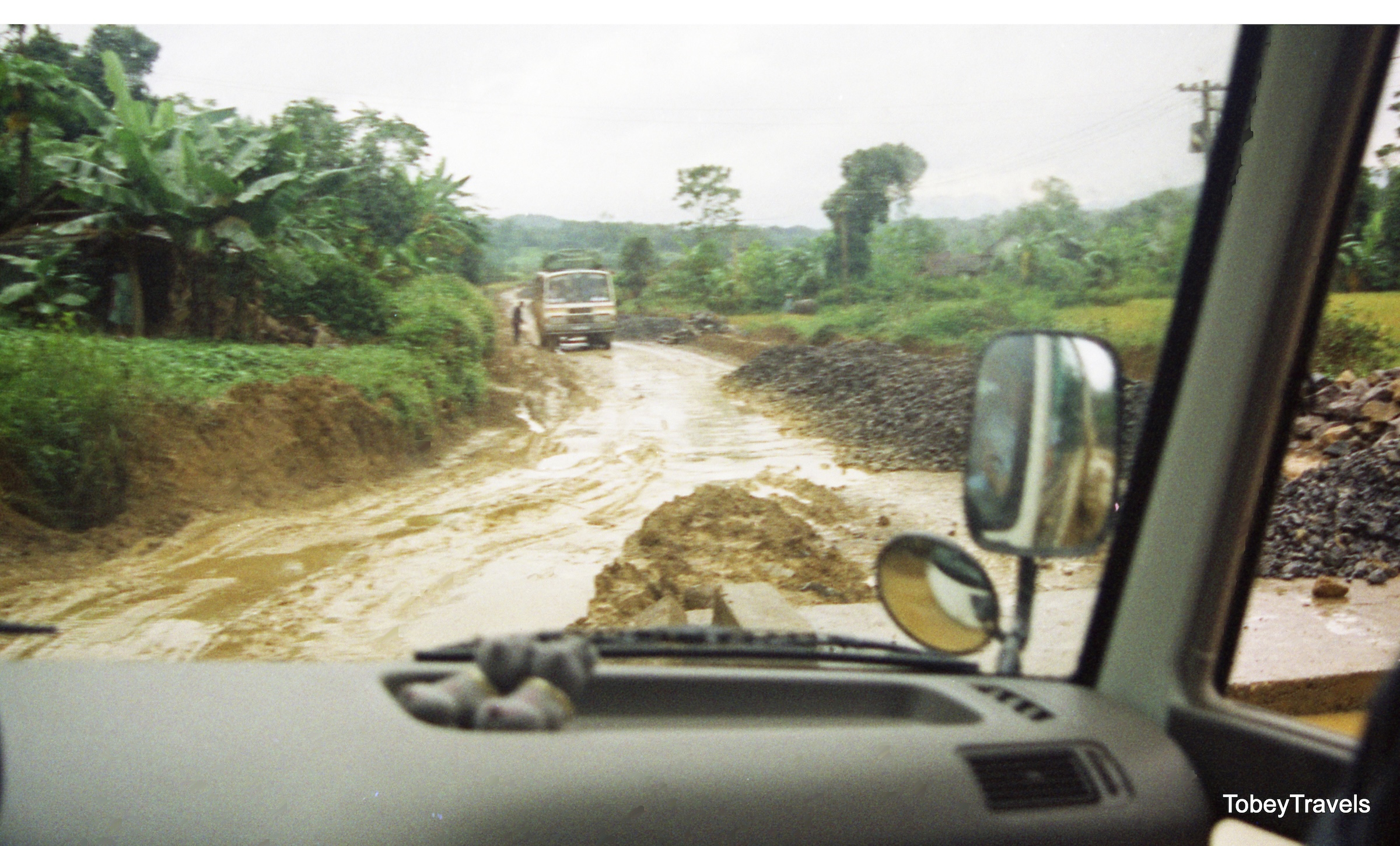 |
Muddy dirt road in Ninh Binh after the rain.
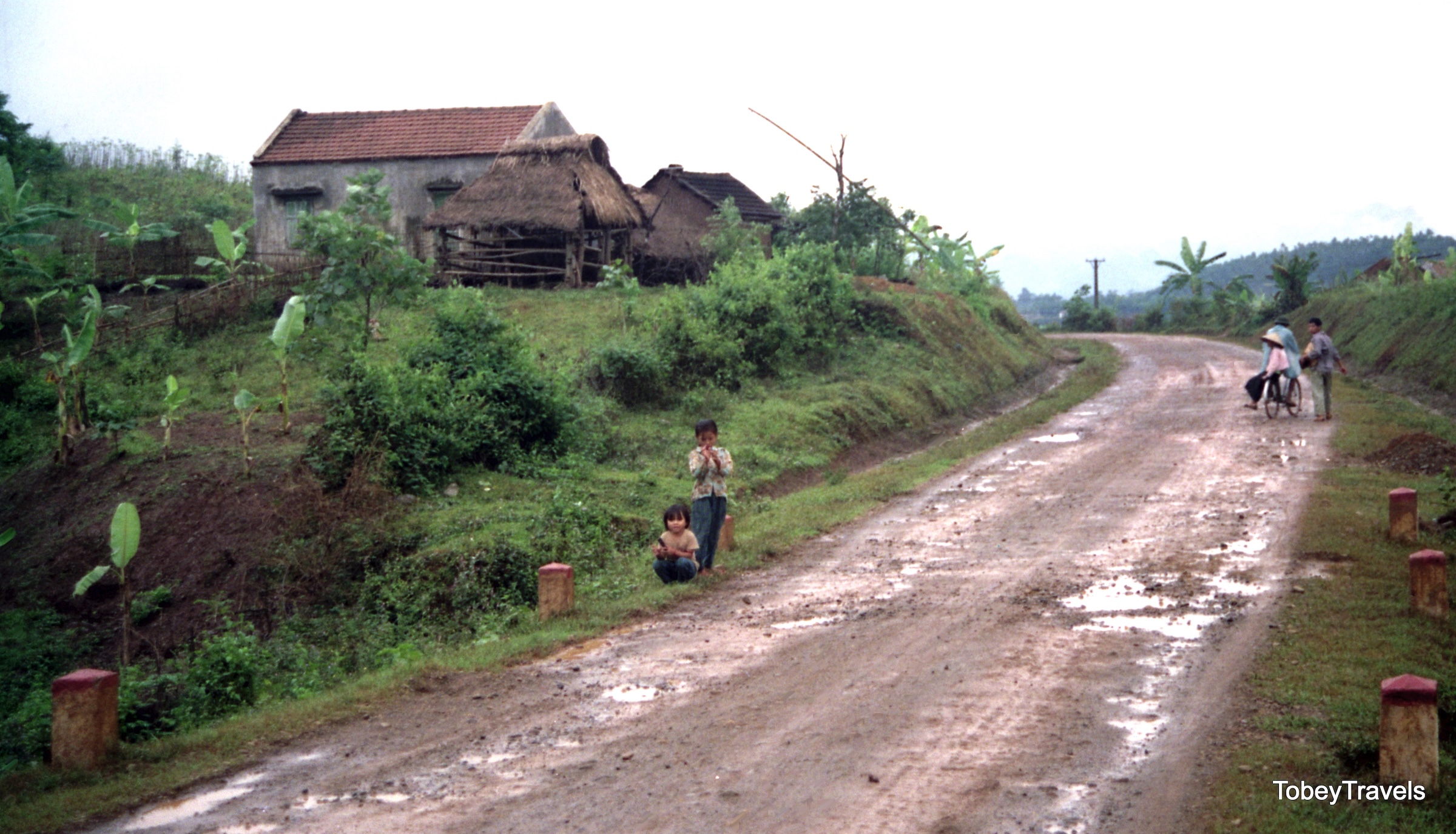 |
A village road in Ninh Binh in 1997.
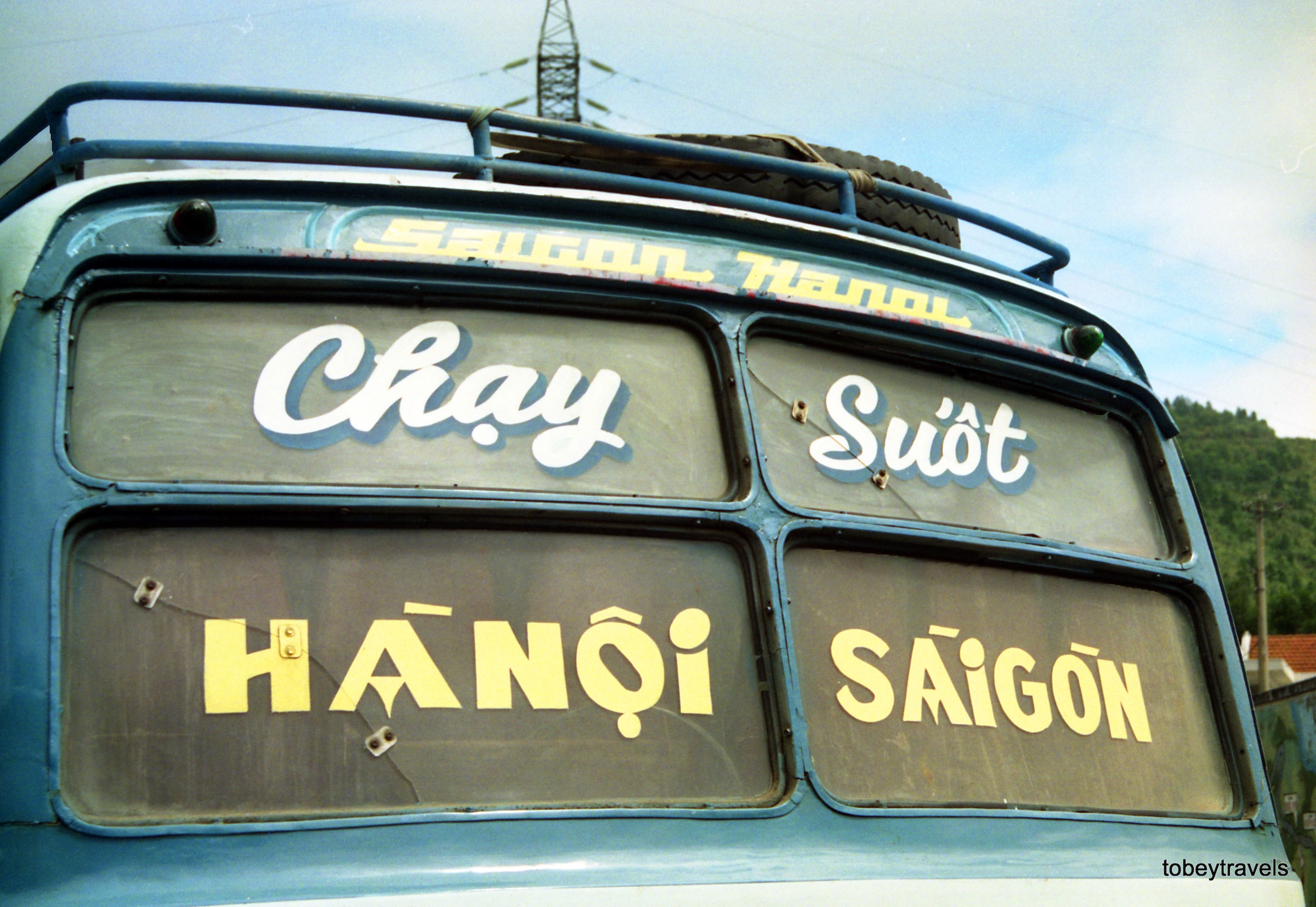 |
A Hanoi - Saigon bus in 1997.
At one point, their car slid off the road and had to be pulled back on by locals. The village chief helped them continue after the guide expressed their gratitude with 50 USD.
"No one complained; everyone was grateful for the help," Tobey said.
The British tourist noted that Vietnam's tourism infrastructure 30 years ago was limited. Travelers on the road had to stop at gas stations for restrooms, most of which lacked amenities. There were very few cars on the roads, bicycles were everywhere, and rural dirt roads were prone to flooding during rain. However, these difficulties were not a problem, as each region they passed through was fascinating.
Traveling by road allowed them to stop at markets and villages and interact with the locals. In some places that had never seen tourists before, people, especially children, were curious and constantly asked questions.
"At a market in Quy Nhon, an old woman even lifted my skirt to see if I was white all over. The whole group laughed with delight when she discovered that I indeed was," Tobey recounted.
Many memories with the locals remain etched in her mind. In Hoa Binh, an old woman invited the group to drink homemade wine and showed them her son's coffin, which she had prepared and placed under the floor of her house. On their way to Cat Ba Island, the group had to sleep on the deck of the boat because the only hotel on the island was fully booked. In Da Nang, a member of their group lost their dentures to a wave. The beach was deserted except for a young couple having their wedding photos taken amidst the magnificent natural scenery. In Hanoi, she remembers the "lesson in crossing the street": walk steadily, "straight as a cow," and never stop.
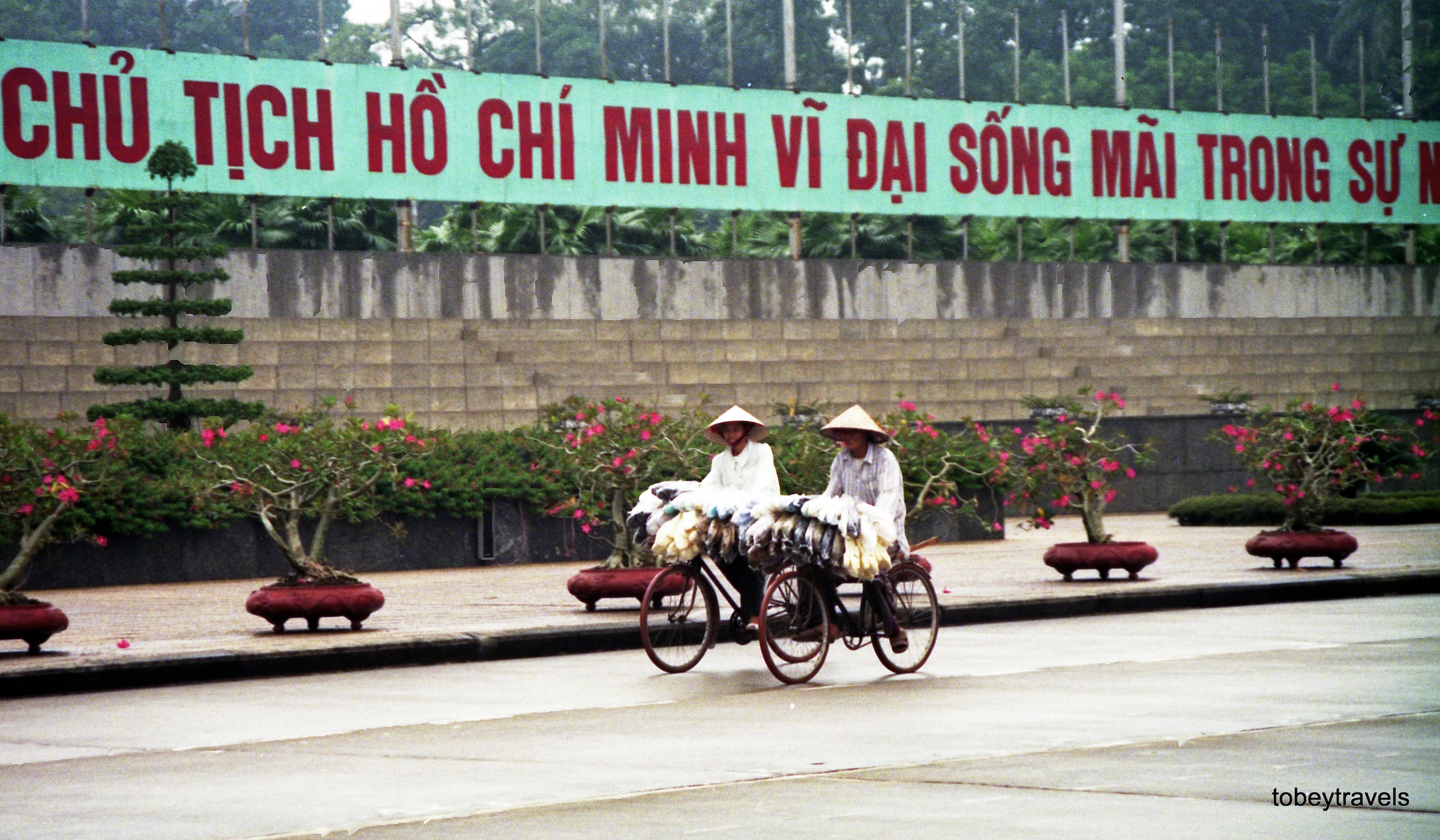 |
Ho Chi Minh Mausoleum, Hanoi, in 1997.
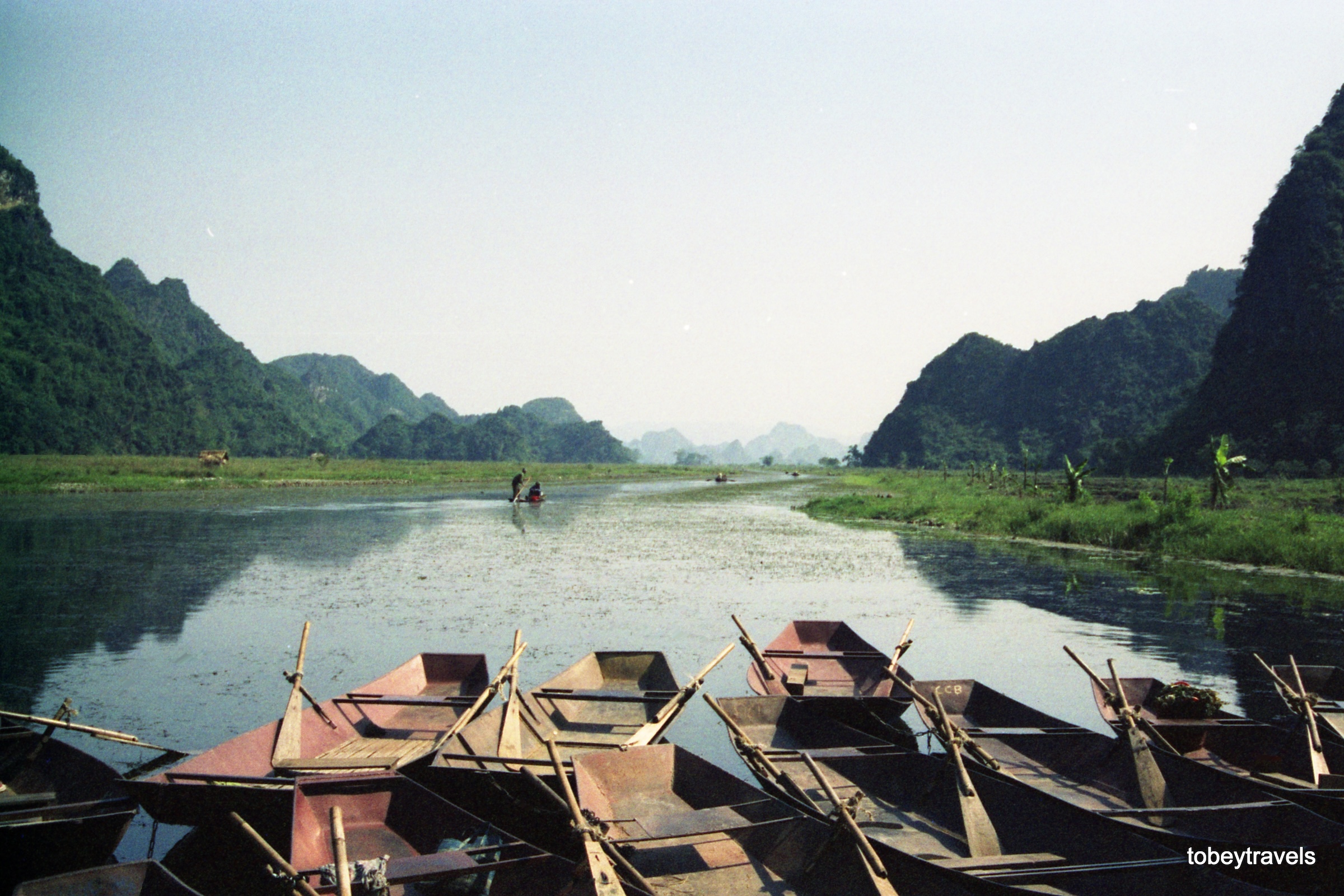 |
The scene at Yen Stream, Perfume Pagoda, almost 30 years ago.
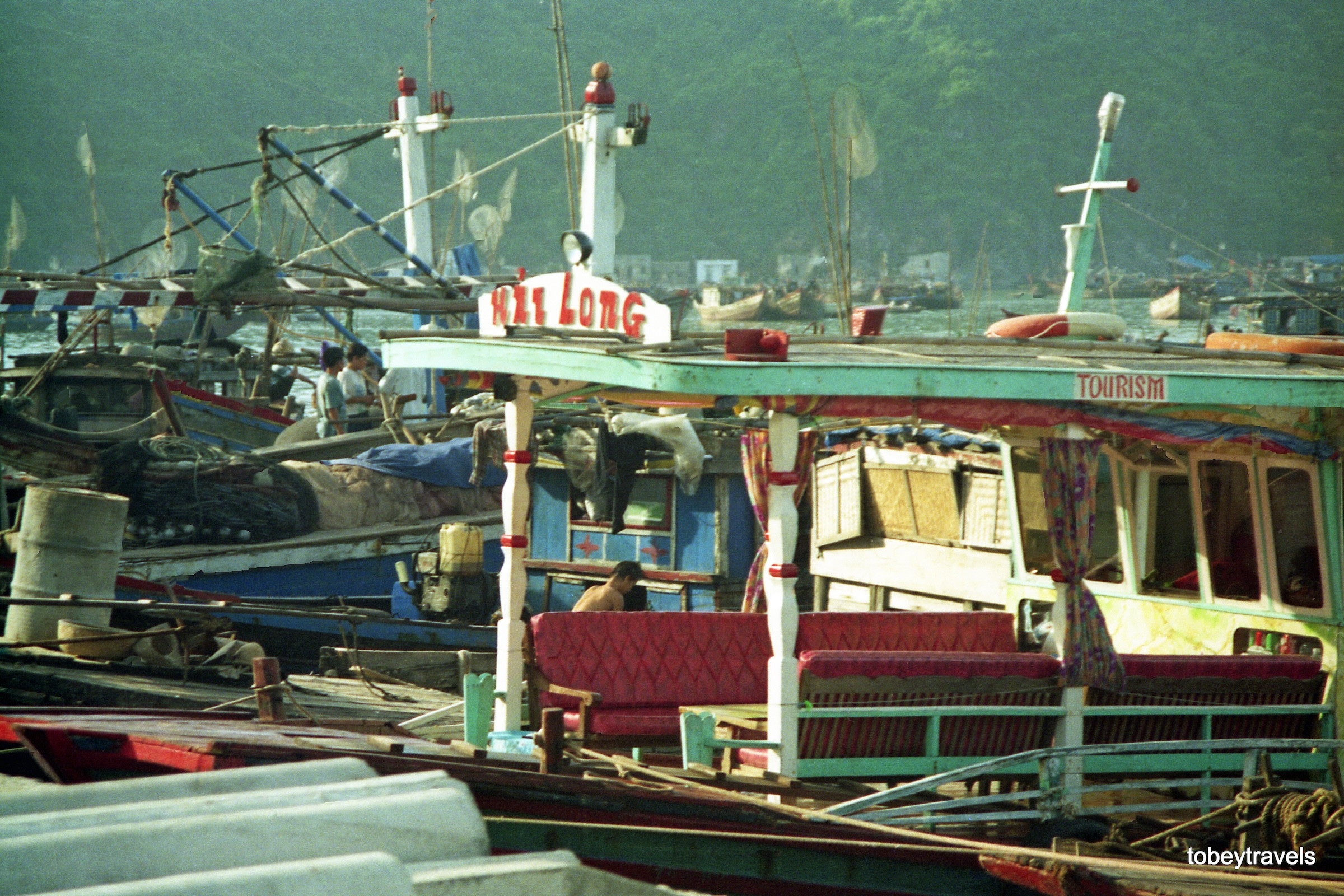 |
Wooden boats anchored in Ha Long Bay.
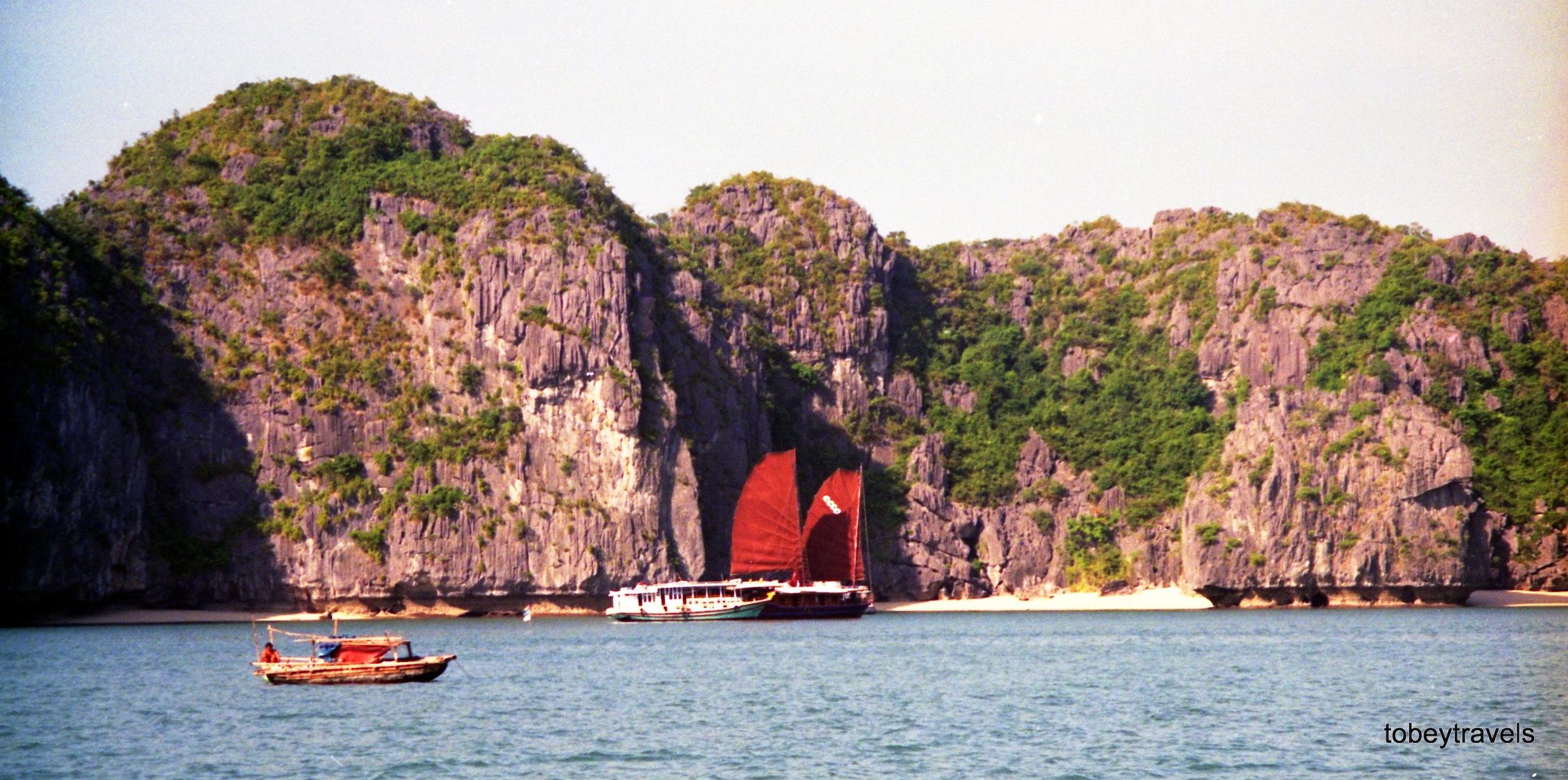 |
Ha Long Bay 30 years ago.
 |
Outside the Hue Imperial Citadel complex.
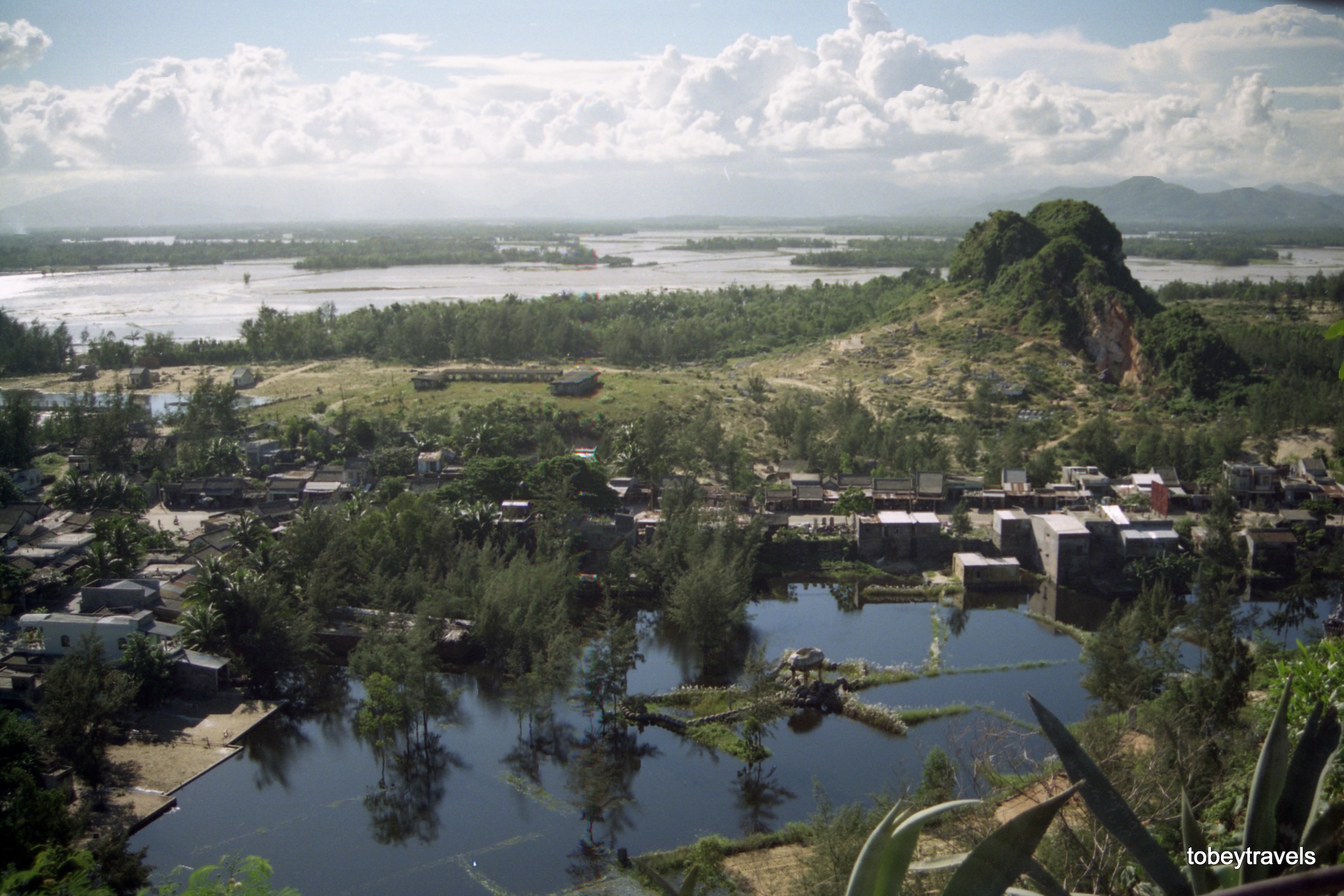 |
The scene at Marble Mountains.
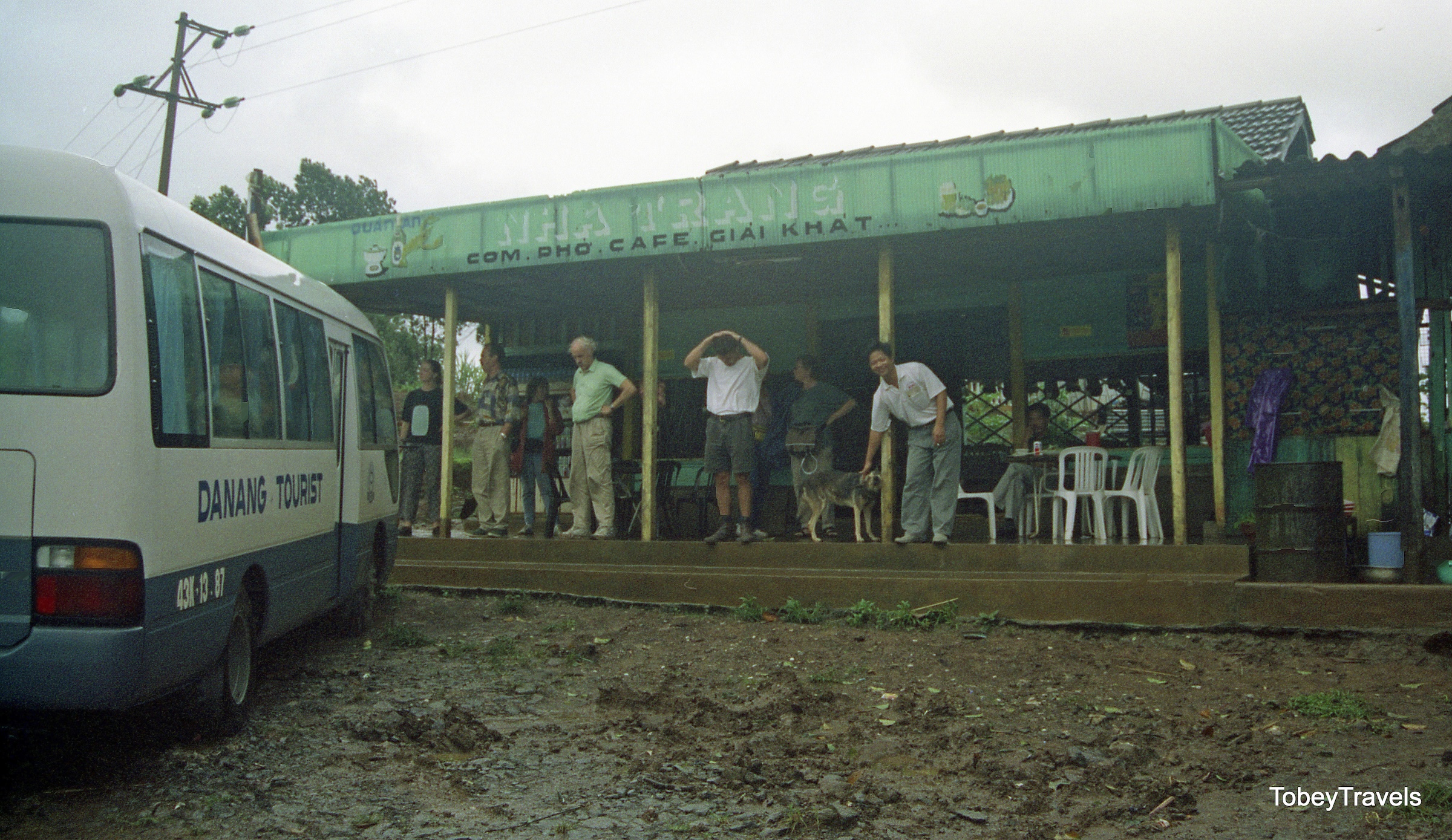 |
A cafe in Nha Trang in 1997.
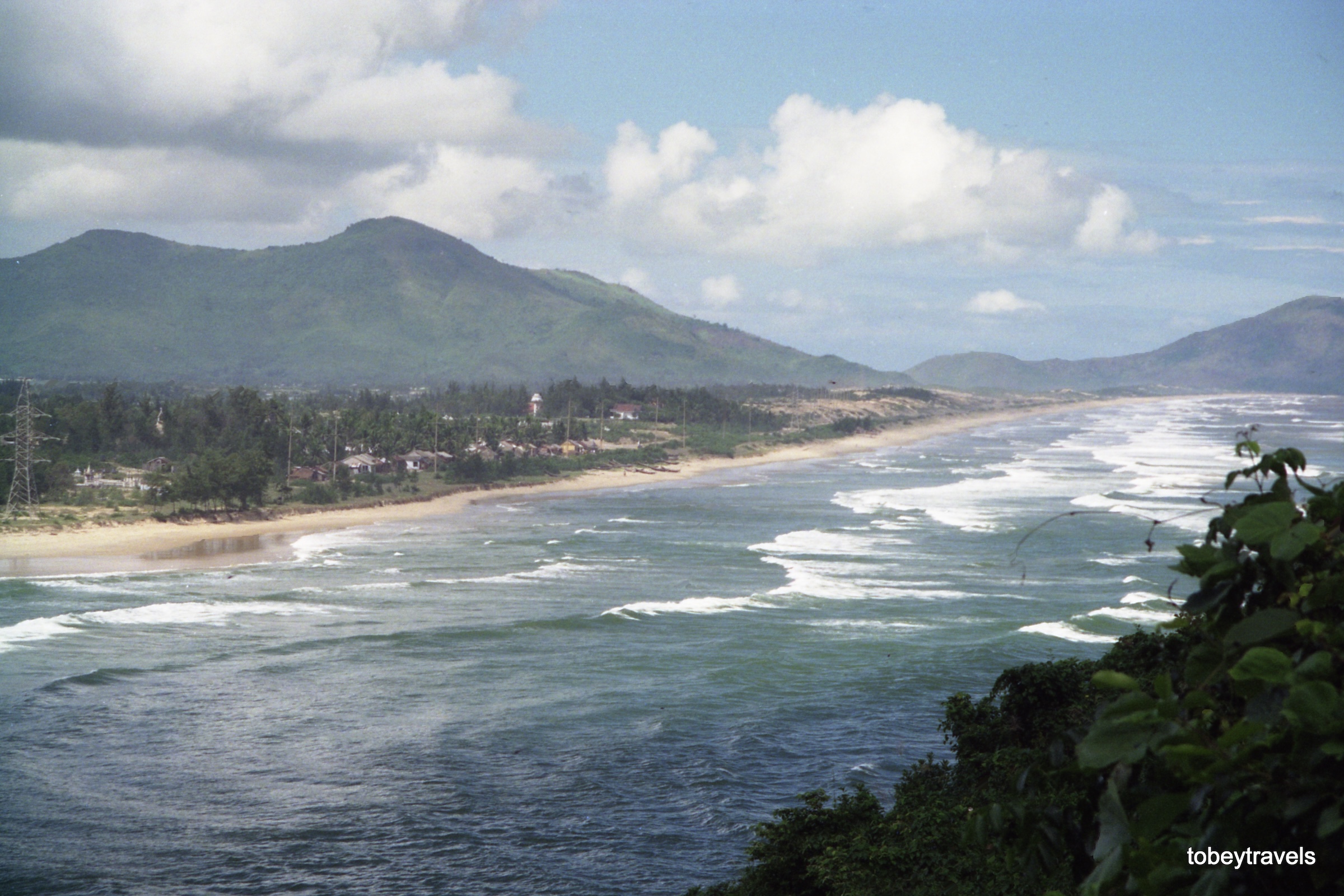 |
The scene at Cam Ranh Bay in 1997.
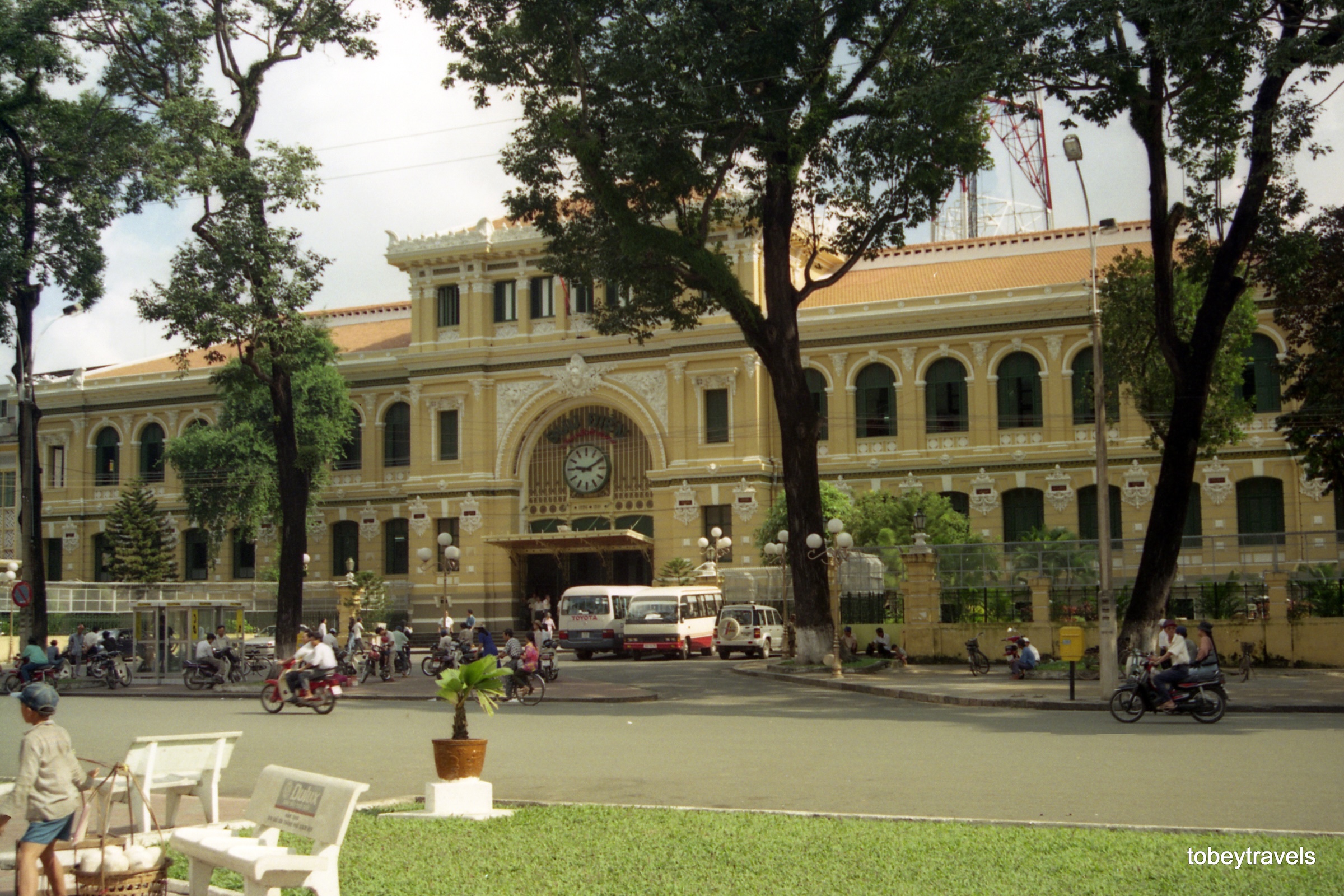 |
Ho Chi Minh City Post Office in 1997.
The most touching memory for her was in Ha Long. The group found a family-run restaurant in a car garage. There was no menu; they ate whatever the host cooked, but every dish was delicious. While they were eating, a man politely offered to sell them postcards and was invited to join their meal. He calmly ordered a can of Coca-Cola but asked to take it home because his son had never had one.
"I often think about that kind man, hoping he and his family are doing well," she said.
In 1997, Vietnam tourism was still a novelty on the world map. Tobey and her husband didn't encounter any other foreigners except in major cities. Their presence in rural areas was "a strange sight." Some locals could speak English and would initiate conversations. Although initially hesitant, everyone was friendly and helpful.
29 years ago was also the year Vietnam officially got the internet. Linda was impressed by the cable installation projects in many southern provinces and cities. Many main roads had trenches dug alongside them, demonstrating the city's vision and pace of development.
"Three weeks of travel left us exhausted, but the places we visited were truly wonderful," Tobey said, adding that she and her husband returned to Ho Chi Minh City in 2003, right after the SARS epidemic. At that time, they were among the few foreign tourists in the city.
Over the past 20 years, the couple has traveled to many more places, always keeping an eye on Vietnam, but haven't had the chance to return.
"Many of my friends have been to Vietnam in recent years and told me about a country I think I wouldn't recognize anymore. I still cherish the wonderful memories of that trip," Tobey said.
Bich Phuong
_Photo: NVCC_



